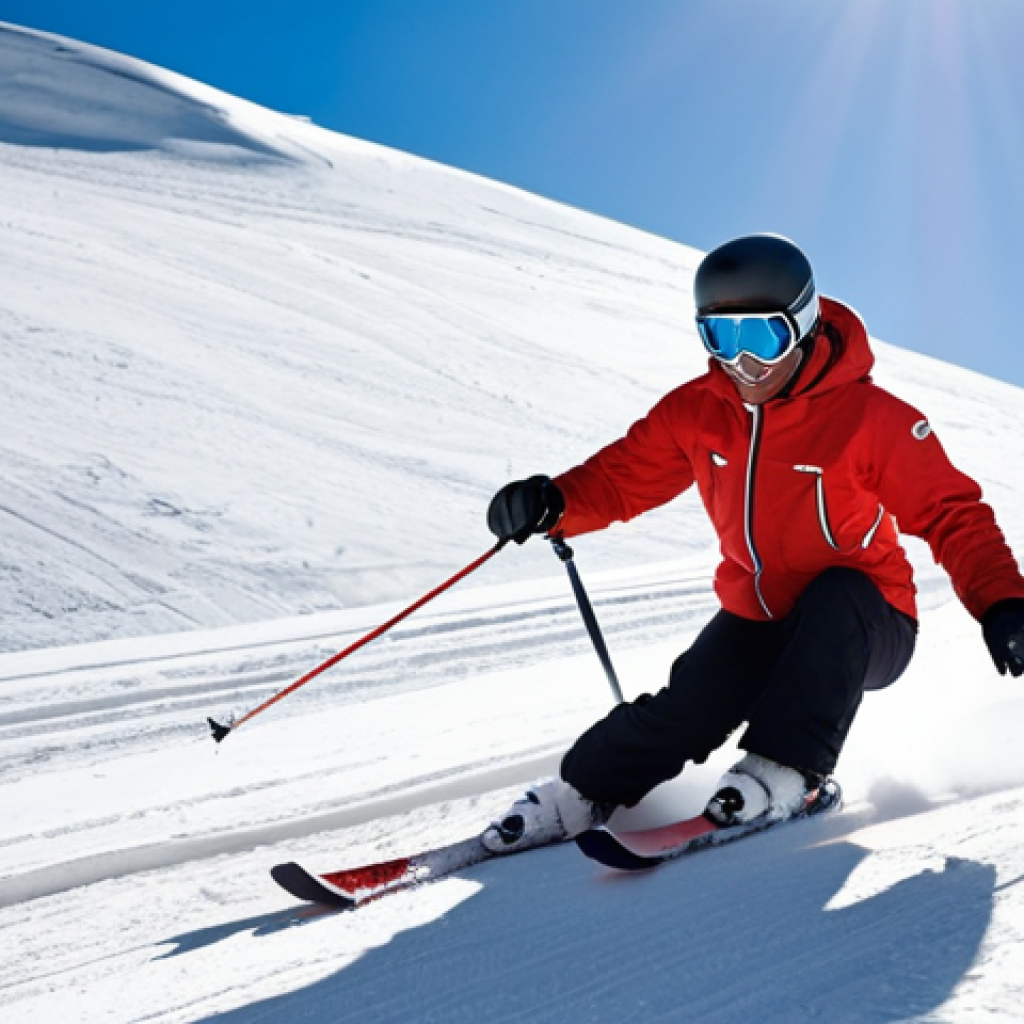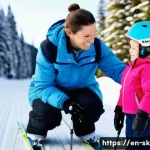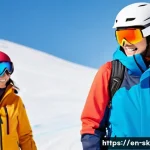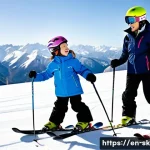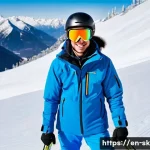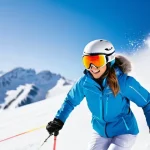So, you’re a ski instructor looking to level up your game? I get it. I’ve been there, staring up at the mountain, wondering how to go from “competent” to “absolutely legendary” on the slopes.
It’s not just about carving cleaner turns or nailing that backflip (though those help!). It’s about constantly evolving, staying ahead of the curve, and becoming the kind of instructor that people rave about.
The world of skiing is constantly changing. New techniques are emerging, equipment is evolving, and frankly, students are getting savvier. We need to keep up, right?
From what I’ve seen, personalized coaching, incorporating technology like video analysis, and a deeper understanding of biomechanics are becoming increasingly important.
Plus, with concerns about climate change impacting ski seasons, understanding sustainable practices and educating our students is becoming crucial. Let’s dive deeper and see how we can sharpen those skills and ensure you stay ahead in the powder.
Let’s find out more in the article below!
Alright, let’s get this content flowing like fresh powder!
Refine Your On-Mountain Prowess
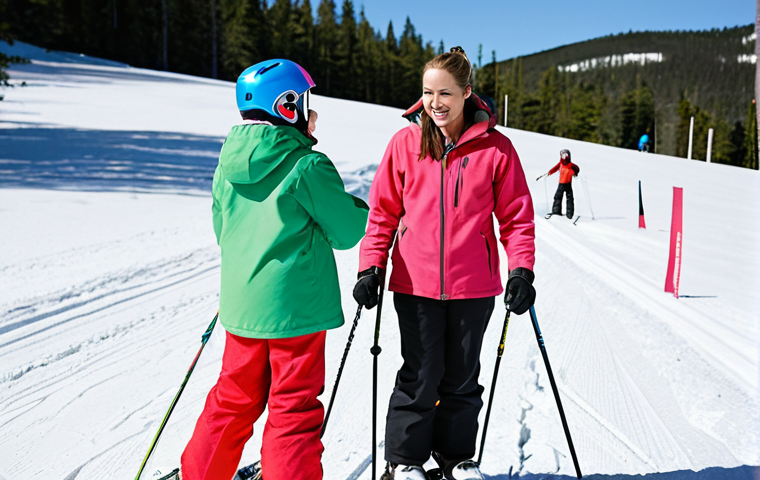
Ski instructing isn’t just about showing people how to pizza or french fry down the bunny hill. It’s about mastering the mountain yourself. You can’t effectively teach what you don’t truly embody.
I remember one season where I plateaued. I was comfortable, but not progressing. I decided to focus on my carving technique.
I booked a session with a former racer and the difference was night and day. Not only did I improve my own skiing, but I also gained a deeper understanding of the mechanics, which I could then pass on to my students.
Hone Your Carving Skills
To be an excellent instructor, you have to ski better than most people on the mountain. Spend time refining your carving technique. This isn’t just about looking good; it’s about efficiency, control, and understanding how the edges of your skis interact with the snow.
Try different turn shapes and radii. Push yourself to ski faster and cleaner. Film yourself and analyze your technique.
You might be surprised by what you see!
Master Mogul Techniques
Moguls. The bane of many skiers, but an absolute playground for the skilled instructor. Get comfortable navigating these bumps with grace and control.
Learn how to absorb the terrain with your legs and maintain a consistent upper body. This will not only improve your own skiing but also allow you to teach your students how to tackle moguls with confidence.
Take a mogul clinic yourself, and practice different techniques like absorbing, jump turns, and rhythmic skiing.
Explore Off-Piste and Powder Techniques
Venturing off the groomed runs and into the powder is where the real fun begins. Develop your skills in deep snow, trees, and variable terrain. Learn how to float, turn, and manage your speed in these conditions.
This will allow you to expand your teaching repertoire and offer your students a more diverse and exciting experience. Remember, powder skiing is a different beast.
It requires a different stance, different weighting, and a different mindset. Get out there and experiment!
Elevate Your Teaching Methodology
Being a great skier doesn’t automatically make you a great instructor. Teaching is a skill in itself, and it requires constant refinement. It’s about understanding different learning styles, adapting your approach to individual needs, and creating a fun and engaging learning environment.
I once had a student who was terrified of speed. Instead of forcing her to go faster, I focused on building her confidence by breaking down the turns into smaller, more manageable steps.
By the end of the lesson, she was not only comfortable with her speed but also enjoying it!
Understand Different Learning Styles
Everyone learns differently. Some people are visual learners, others are auditory, and some are kinesthetic. Identify your students’ learning styles and tailor your teaching approach accordingly.
Use visual aids, give clear verbal instructions, and provide opportunities for hands-on practice. For example, for a visual learner, you might draw a diagram of the turn on the snow.
For an auditory learner, you might explain the mechanics of the turn in detail. And for a kinesthetic learner, you might have them practice the turn while focusing on the feeling of their edges engaging with the snow.
Develop Your Communication Skills
Clear and effective communication is essential for effective teaching. Learn how to explain complex concepts in simple terms. Use analogies and metaphors to help your students understand the mechanics of skiing.
Be patient and encouraging. And most importantly, listen to your students’ concerns and address them with empathy and understanding. Sometimes, the best thing you can do is just listen and let your student vent their frustrations.
Master the Art of Giving Feedback
Providing constructive feedback is crucial for helping your students improve. Be specific and focus on one or two key areas for improvement. Avoid being overly critical or negative.
Instead, focus on the positive aspects of their skiing and offer suggestions for how they can build on their strengths. Frame your feedback in a way that is encouraging and motivating.
For example, instead of saying “You’re leaning back too much,” you might say “Try shifting your weight forward slightly to engage the front of your skis.”
Sharpen Your Knowledge Base
A great ski instructor is more than just a good skier and a good teacher. They also have a deep understanding of the sport, the equipment, and the mountain environment.
It’s about staying informed about the latest techniques, understanding the mechanics of the equipment, and being aware of the potential hazards of the mountain.
I always make it a point to read up on the latest ski technology. Knowing how the different ski shapes and binding systems work allows me to give my students informed recommendations and help them choose the right gear for their needs.
Study Ski Equipment and Technology
Stay up-to-date on the latest ski equipment and technology. Understand how different ski shapes, binding systems, and boot designs affect performance.
This will allow you to give your students informed recommendations and help them choose the right gear for their needs. Go to demo days and try out the latest equipment.
Talk to the reps from the different manufacturers. And read reviews and articles online.
Deepen Your Understanding of Mountain Safety
Safety is paramount in skiing. A good instructor should have a thorough understanding of avalanche safety, first aid, and mountain rescue techniques. Take an avalanche safety course.
Learn how to recognize and avoid potential hazards. And be prepared to respond in case of an emergency. Always carry a first aid kit with you.
And know how to use it.
Learn about the History and Culture of Skiing
Skiing is more than just a sport; it’s a culture. Learn about the history of skiing, the different styles of skiing, and the traditions of the mountain community.
This will not only enrich your own experience but also allow you to share your passion for the sport with your students. Read books about skiing history.
Watch documentaries about ski culture. And attend ski events and festivals.
Embrace Technology and Innovation
The world of ski instruction is evolving, and technology is playing an increasingly important role. From video analysis to GPS tracking to online learning platforms, there are a variety of tools that can help you improve your teaching and enhance your students’ learning experience.
I started using video analysis a few years ago, and it has completely transformed my teaching. Being able to show my students exactly what they are doing wrong and how they can improve has been invaluable.
Utilize Video Analysis
Video analysis is a powerful tool for identifying and correcting technical flaws. Film your students as they ski and then review the footage together.
Point out areas where they can improve and offer suggestions for how they can make those changes. There are a variety of video analysis apps available that allow you to slow down the footage, draw lines on the screen, and compare your students’ technique to that of professional skiers.
Incorporate GPS Tracking and Performance Metrics
GPS tracking devices can provide valuable data on your students’ performance, such as speed, distance, and vertical drop. Use this data to track their progress and identify areas where they need to improve.
Some GPS tracking apps also allow you to share your data with your students online, so they can review their performance and track their progress on their own.
Explore Online Learning Platforms
Online learning platforms can provide a convenient and accessible way for your students to supplement their on-mountain instruction. Create online courses, post instructional videos, and offer online coaching sessions.
This can be a great way to stay connected with your students between lessons and provide them with ongoing support.
Cultivate a Growth Mindset
The best ski instructors are always learning and growing. They are constantly seeking new knowledge, experimenting with new techniques, and challenging themselves to become better.
They embrace feedback, learn from their mistakes, and are never afraid to step outside of their comfort zone. I’m constantly attending clinics and workshops, reading books and articles, and watching videos to stay up-to-date on the latest trends and techniques.
Seek Out Mentorship and Collaboration
Connect with other experienced ski instructors and seek out mentorship opportunities. Learn from their experience, share your own insights, and collaborate on projects.
This can be a great way to expand your knowledge, improve your skills, and build a supportive network of colleagues. Attend ski instructor conferences and workshops.
Join online forums and communities. And reach out to instructors who you admire and ask them for advice.
Embrace Challenges and Step Outside Your Comfort Zone
Don’t be afraid to try new things and push yourself outside of your comfort zone. This is the only way to truly grow and improve. Take on new challenges, such as teaching advanced skiers, leading backcountry tours, or competing in ski instructor events.
The more you challenge yourself, the more you will learn and grow.
Reflect on Your Experiences and Learn from Your Mistakes
Take time to reflect on your experiences and learn from your mistakes. What went well? What could you have done better?
What did you learn? This process of self-reflection is essential for continuous improvement. Keep a journal of your teaching experiences.
Review your video footage and analyze your technique. And ask your students for feedback.
Prioritize the Guest Experience
At the end of the day, we’re in the service industry. It’s important to remember that the guest experience is paramount. Here’s a breakdown of key areas:
| Area | Importance | Specific Actions |
|---|---|---|
| Communication | High | Clear instructions, active listening, positive reinforcement, timely responses. |
| Personalization | Medium | Remember names, tailor lessons, cater to individual goals, offer personalized feedback. |
| Safety | Critical | Thorough safety briefing, awareness of conditions, responsible decision-making, emergency preparedness. |
| Fun Factor | High | Create a positive atmosphere, incorporate games, celebrate achievements, make learning enjoyable. |
| Professionalism | High | Punctuality, appropriate attire, positive attitude, respect for guests and the mountain environment. |
Be a Great Listener
Really listen to your students. What are their goals? What are their fears?
What are they struggling with? The more you listen, the better you can tailor your instruction to their individual needs. Don’t just wait for your turn to talk.
Actively listen to what your students are saying. Ask clarifying questions. And show them that you care about their experience.
Make it Fun and Engaging
Skiing should be fun! Create a positive and engaging learning environment that encourages your students to participate and enjoy the experience. Use games, challenges, and other activities to keep them motivated and engaged.
Don’t be afraid to be silly and have fun. The more your students enjoy the experience, the more they will learn.
Go the Extra Mile
Look for opportunities to go the extra mile for your students. Offer them tips on where to ski, recommend restaurants and shops, or even just help them carry their skis.
These small gestures can make a big difference in their overall experience and create a lasting impression. Remember, word-of-mouth is the best form of advertising.
By embracing these strategies, you can transform yourself from a good ski instructor into a truly exceptional one. You’ll improve your skills, enhance your teaching, and create a more rewarding experience for yourself and your students.
Now go out there and shred!
In Conclusion
Becoming a truly exceptional ski instructor is a journey, not a destination. It requires a commitment to continuous learning, a passion for sharing your knowledge, and a genuine desire to help others experience the joy of skiing. So, embrace the challenges, celebrate the successes, and never stop striving to become the best instructor you can be. Now get out there and make some unforgettable mountain memories!
Helpful Tips to Keep in Mind
1. Stay Hydrated: High altitude and physical exertion can lead to dehydration quickly. Carry water and sip throughout the day.
2. Sun Protection is Key: Even on cloudy days, the sun’s rays are intense at high altitude. Wear sunscreen, lip balm with SPF, and sunglasses or goggles.
3. Dress in Layers: Mountain weather can change rapidly. Layering allows you to adjust your clothing to stay comfortable throughout the day. Think moisture-wicking base layers, an insulating mid-layer, and a waterproof, windproof outer layer.
4. Know the Code: Familiarize yourself with the Skier’s Responsibility Code to ensure a safe and enjoyable experience for yourself and others on the mountain. This includes knowing who has the right-of-way (downhill skiers yield to uphill skiers) and staying in control.
5. Respect the Mountain: Leave no trace. Pack out everything you pack in, and be mindful of the environment. Respect wildlife and stay on marked trails when off-piste.
Key Takeaways
To elevate your ski instruction game:
- Always refine your own skiing technique.
- Focus on understanding and catering to different learning styles.
- Prioritize safety at all times.
- Embrace technology to improve your teaching.
- Never stop learning and seeking new knowledge.
Frequently Asked Questions (FAQ) 📖
Q: How can I personalize my ski instruction to better cater to individual student needs?
A: From my experience, the best way to personalize instruction is to ditch the one-size-fits-all approach. Spend the first few minutes actually talking to your students.
What are their goals for the day? What’s their skiing background? Are they terrified of ice patches?
Once you understand their motivations and fears, you can tailor your drills and explanations to resonate with them. For example, instead of just saying “keep your weight forward,” you could say to a beginner, “remember how you lean into the wind when you’re walking to keep your balance?
It’s the same idea here!” Real-world connections make all the difference.
Q: What are some simple ways to incorporate video analysis into my ski lessons without fancy equipment?
A: Forget about needing a high-end camera crew! Your smartphone is your best friend. I’ve found that even a quick video of a student doing a few turns, played back in slow motion, can be a game-changer.
Point out specific areas for improvement like their stance, arm position, or how they’re initiating the turn. I often ask my students, “What do you see that you could improve?” Getting them to analyze themselves promotes independence and faster learning.
Plus, it’s something they can do on their own after the lesson.
Q: How can I incorporate environmental awareness into my ski lessons and help promote sustainable skiing practices?
A: This is a big one, and honestly, it’s our responsibility. I start by chatting about mountain etiquette and respecting the environment. Things like staying on marked trails to protect vegetation, properly disposing of trash, and being mindful of wildlife.
I even mention the impact of gear choices – encouraging them to consider renting instead of buying every year, and supporting brands committed to sustainable manufacturing.
You can also share simple facts about snowmaking and water conservation, highlighting the resort’s efforts. It’s all about making them aware that we’re guests in this beautiful environment and that we need to protect it so future generations can enjoy it too.
📚 References
Wikipedia Encyclopedia
구글 검색 결과
구글 검색 결과
구글 검색 결과
구글 검색 결과
구글 검색 결과
